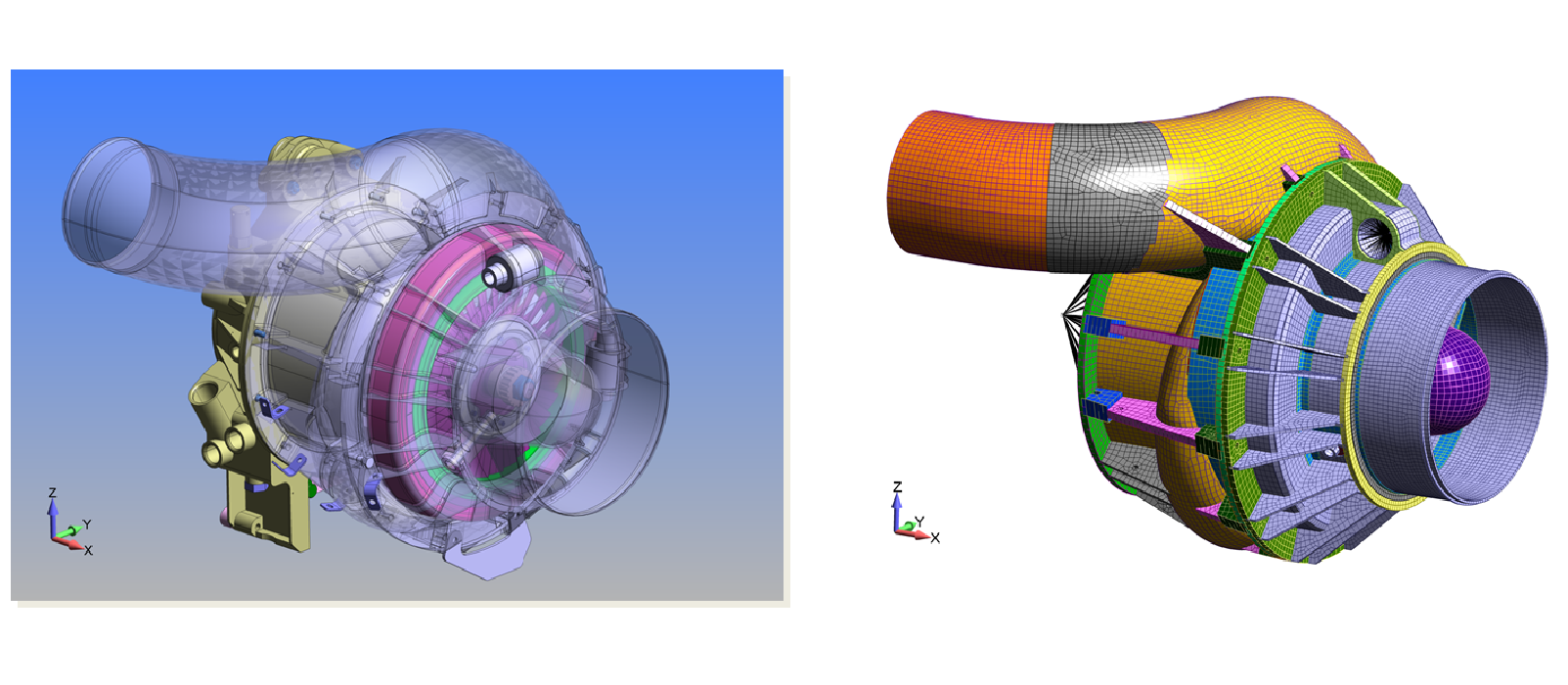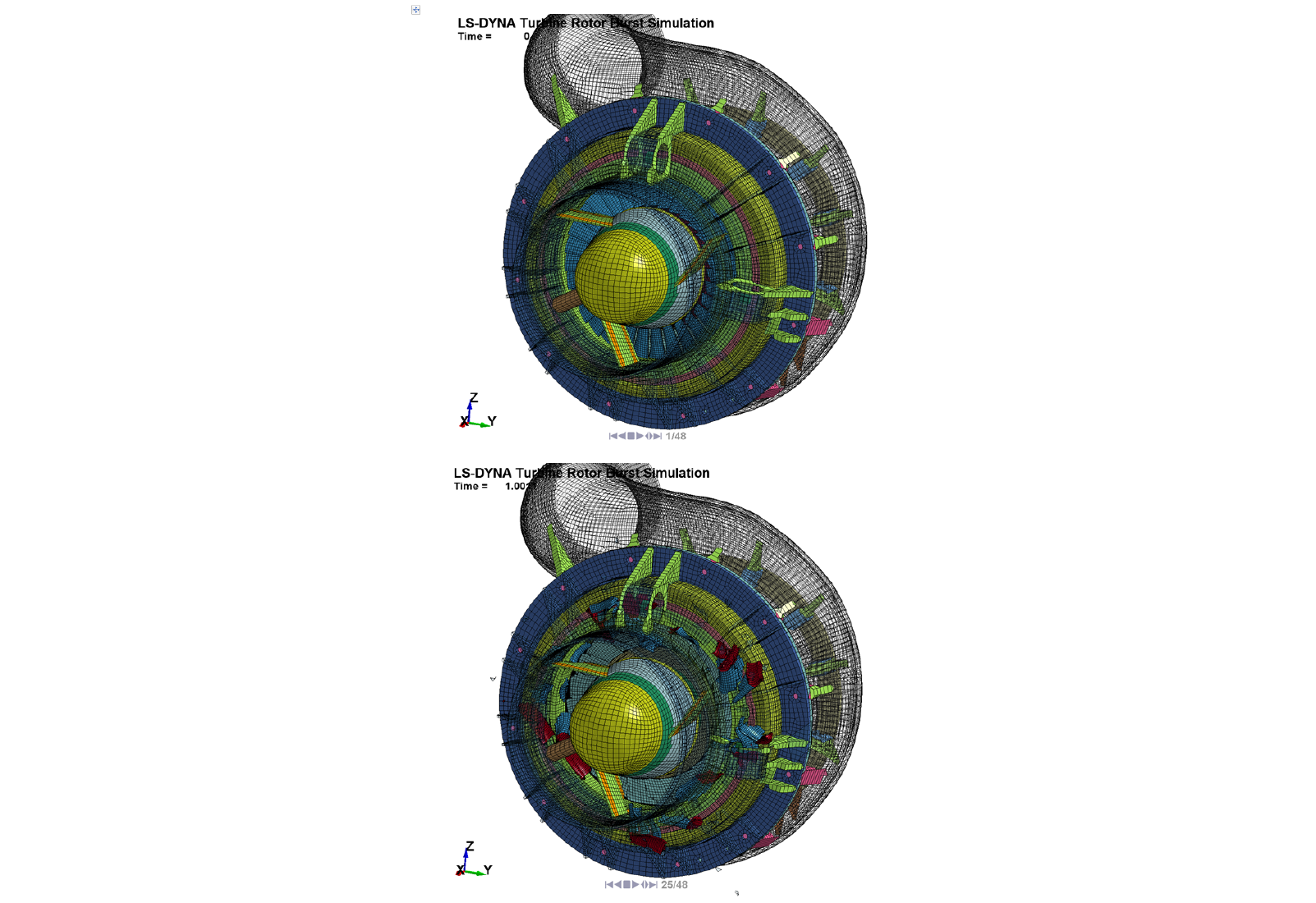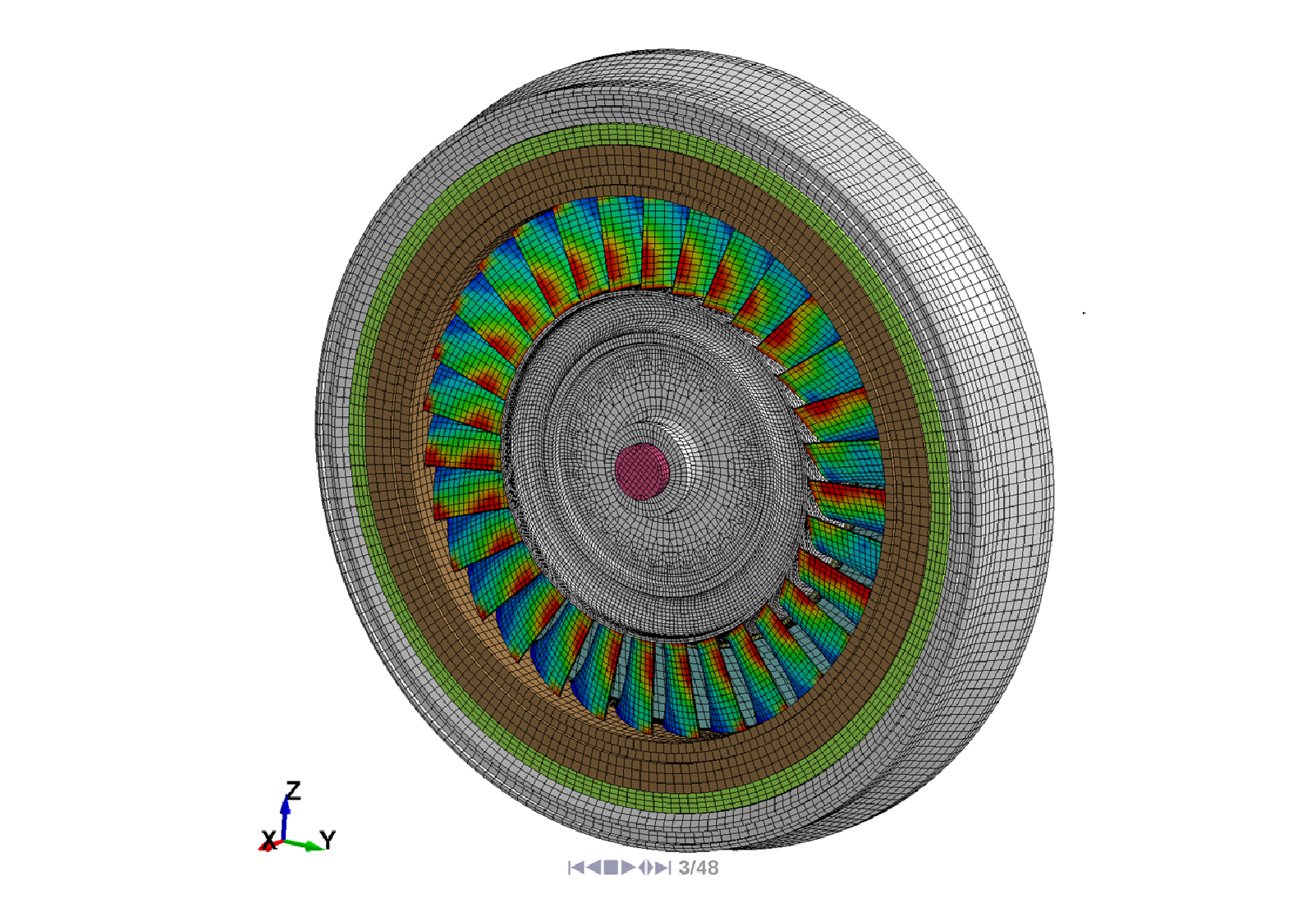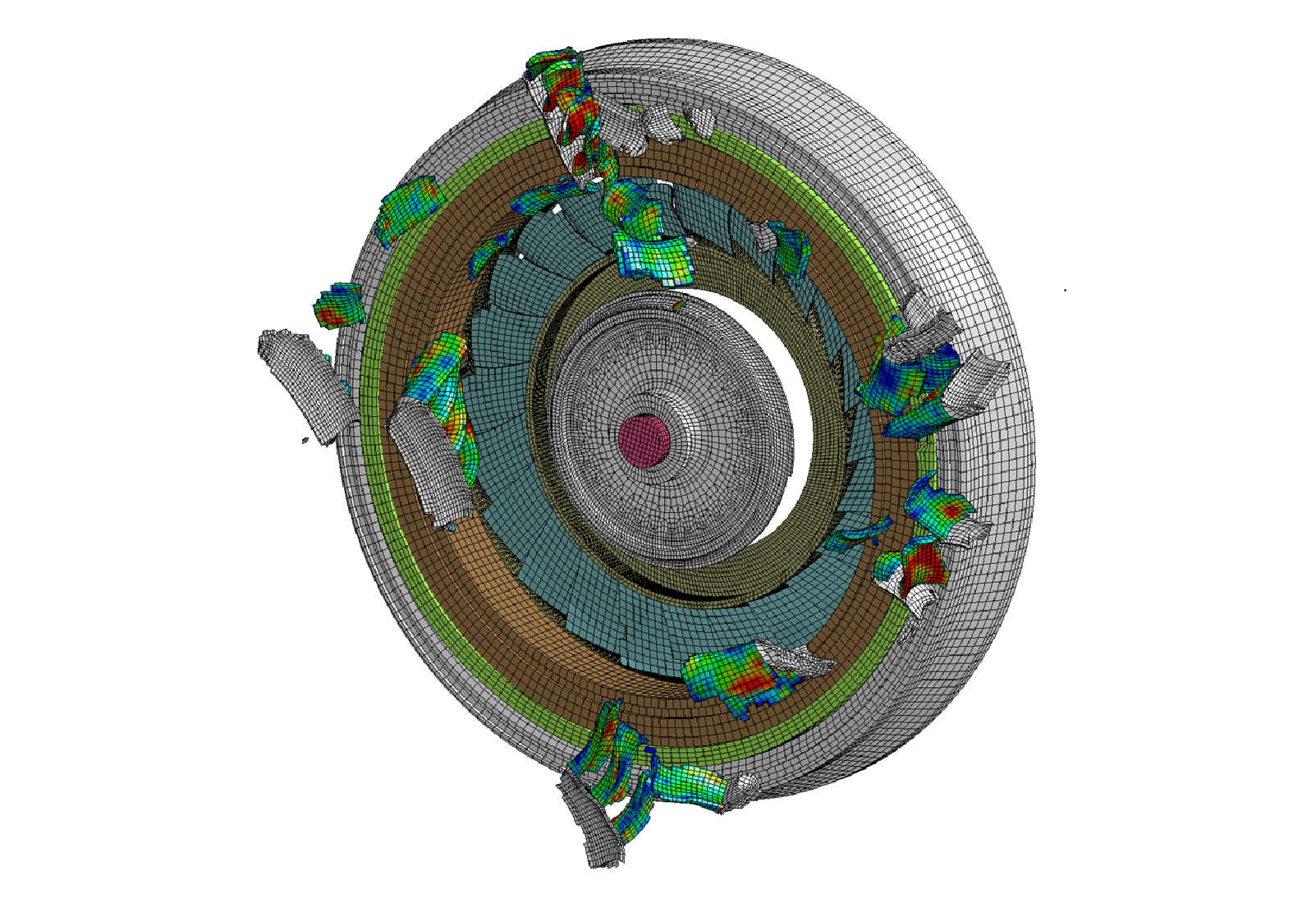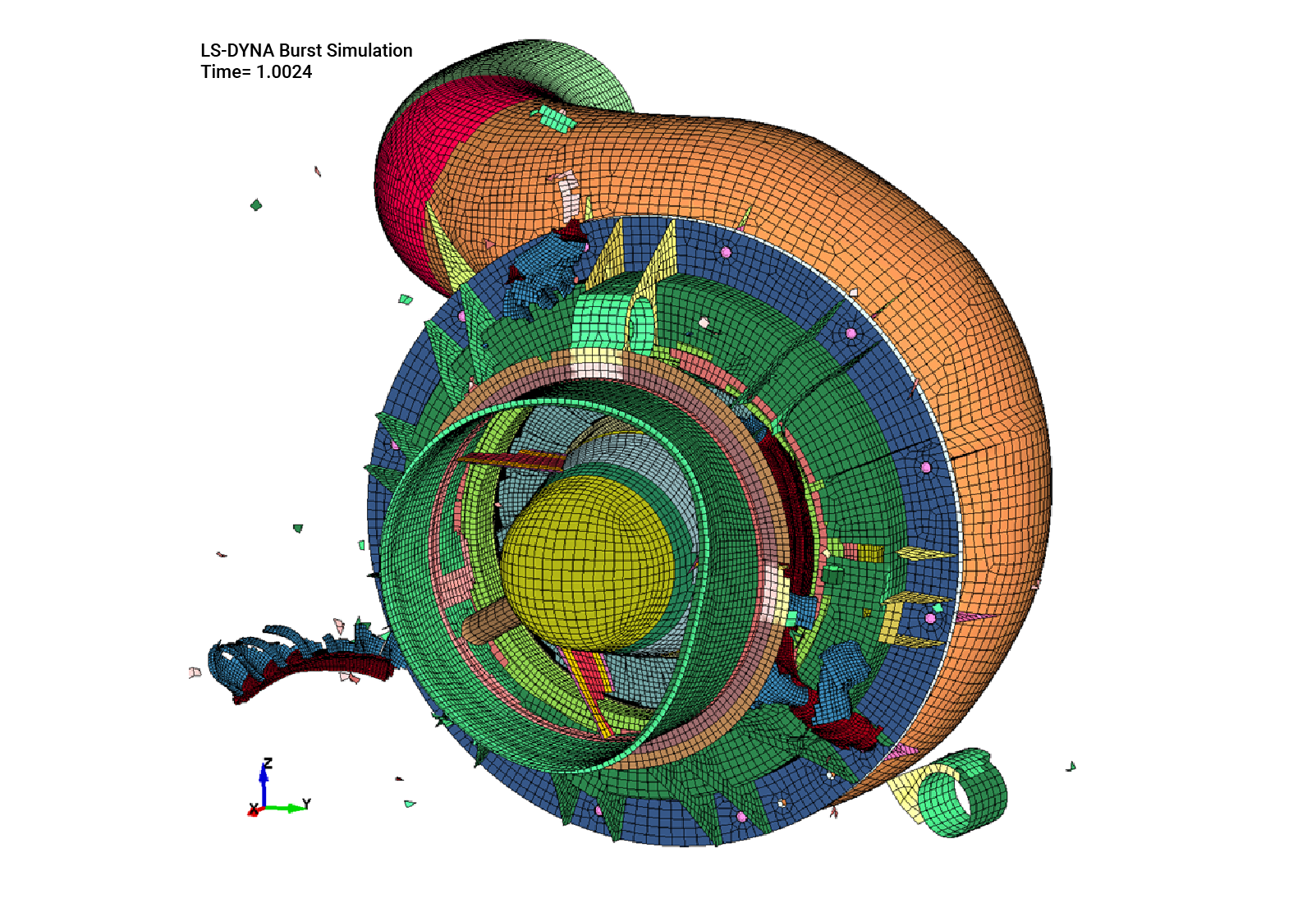LS-DYNA FEA Turbine Blade-Out (Burst) or Disk Containment Simulation

Analysis
Objective
A turbine system was simulated to improve its burst containment capabilities. The LS-DYNA work was correlated to experimental data and was found to accurately predict the burst containment process.
The complete turbine was modeled using brick elements for the turbine rotor system and main containment rings. The outer frame (inlet volute and exhaust system) was modeled using plate elements. The initial spin up of the turbine was simulated using an implicit solution and then switched to explicit for the fusing of the rotor disk and subsequent burst of the blade system. Material failure was modeled using a mix-mode erosion criterion where the compressive and tensile failure modes were set to different values based on NASA provided test data.
The client used the results of the simulations to drive the design process. The final LS-DYNA simulation accurately predicted that the burst containment system would function as designed and was subsequently validated by a turbine burst test.
Keywords: LS-DYNA, burst, burst containment, nonlinear analysis, transient, dynamic, element erosion, damage prediction, contact analysis, FAA, turbine burst event, Boeing 767-400, implicit to explicit switching, nonlinear, transient dynamic, burst containment, implicit spin-up, mix-mode element erosion, blade-out containment, disk-burst containment
PDF Download
Turbine Burst or Disk Burst Containment at 30,000 ft (well - not quite)
